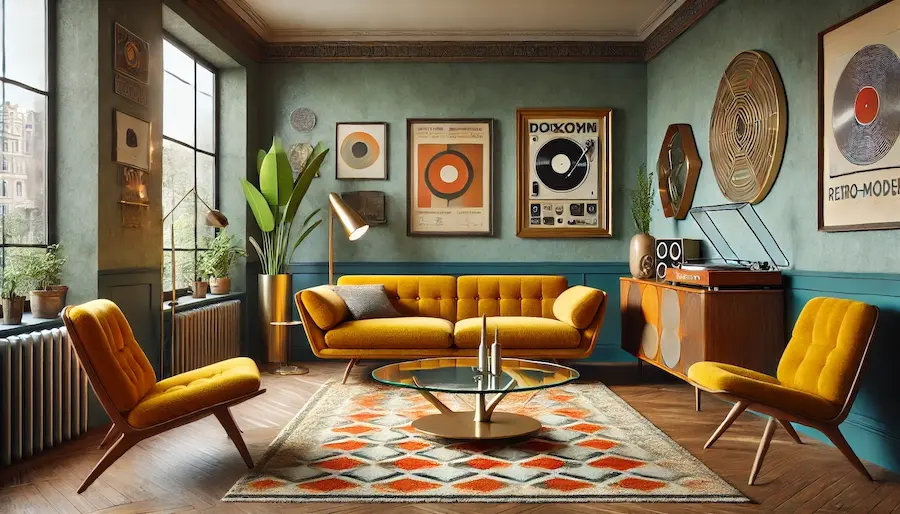A retro modern living room seamlessly blends nostalgic design elements from the mid-20th century with contemporary aesthetics, creating a space that is both timeless and current. This style draws inspiration from the 1950s through the 1970s, incorporating bold colors, geometric patterns, and sleek furniture to evoke a sense of nostalgia while maintaining modern functionality.
History and Origins of Retro Modern Design
Retro modern design, often synonymous with mid-century modern, emerged in the mid-20th century as a response to the post-war era’s optimism and innovation. Characterized by clean lines, organic shapes, and an emphasis on functionality, this design movement sought to break away from traditional ornate styles, embracing simplicity and new materials. The resurgence of interest in retro modern design reflects a desire to combine the charm of vintage aesthetics with the conveniences of contemporary living.
Key Features of a Retro Modern Living Room
- Furniture: Incorporate iconic mid-century pieces such as Eames lounge chairs, Noguchi coffee tables, or teak sideboards. These items are known for their sleek lines and functional design, serving as focal points in the room.
- Color Palette: Utilize a mix of earthy tones like mustard yellow, olive green, and burnt orange, complemented by neutral shades to balance the vibrancy. This combination adds warmth and visual interest to the space.
- Patterns and Textures: Incorporate geometric patterns through rugs, cushions, or wallpaper to add a dynamic element. Textures like velvet or tweed can introduce depth and comfort.
- Lighting: Opt for statement lighting fixtures such as sputnik chandeliers or arc floor lamps. These pieces not only provide illumination but also serve as artistic expressions of the retro modern style.
- Accessories: Add vintage-inspired decor items like rotary dial phones, abstract art prints, or ceramic vases to enhance the nostalgic ambiance. These accessories contribute to the overall theme without overwhelming the space.
Applications of Retro Modern Design
- Open Floor Plans: The retro modern style complements open layouts by defining spaces with area rugs and strategically placed furniture, creating distinct zones within a larger area.
- Small Spaces: The emphasis on functionality and minimalism in retro modern design makes it suitable for smaller living rooms, where multi-purpose furniture can maximize utility without sacrificing style.
- Eclectic Mix: Combining retro modern elements with other design styles, such as industrial or bohemian, can result in a unique and personalized living space that reflects individual tastes.
Considerations When Designing a Retro Modern Living Room
- Balance: Achieving harmony between retro and modern elements is crucial. Avoid creating a space that feels like a time capsule by integrating contemporary pieces alongside vintage-inspired items.
- Quality: Invest in well-crafted furniture and decor to ensure longevity and maintain the aesthetic appeal of the room. Authentic vintage pieces or high-quality reproductions can add authenticity to the design.
- Personalization: Incorporate personal touches, such as family heirlooms or artwork, to make the space uniquely yours and prevent it from feeling overly staged.
Conclusion
A retro modern living room offers a harmonious blend of past and present, combining the nostalgic charm of mid-century design with contemporary comforts. By thoughtfully selecting furniture, colors, and accessories, you can create a space that is both stylish and inviting, reflecting the timeless appeal of retro modern aesthetics.
